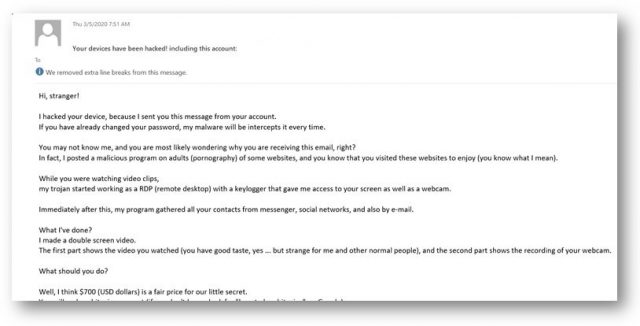

Rewterz Threat Intel – The Evolution of Agrius APT Group Targeting Pakistan – Active IOCs
June 11, 2021
Rewterz Threat Alert – Remcos RAT – Active IOCs
June 13, 2021
Rewterz Threat Intel – The Evolution of Agrius APT Group Targeting Pakistan – Active IOCs
June 11, 2021
Rewterz Threat Alert – Remcos RAT – Active IOCs
June 13, 2021Severity
High
Analysis Summary
Also known as “Racealer,” Racoon is used to steal sensitive and confidential information including login credentials, credit card information, cryptocurrency wallets, and browser information (cookies, history, autofill) from almost 60 applications. Raccoon stealer is written in C++ and it has a wide range of methods and features for stealing data from popular browsers, email clients, and cryptocurrency wallets. The malware is delivered via exploit kits that use browser-based vulnerabilities to redirect victims to landing pages injected with exploit codes. It’s also spread via phishing campaigns convincing targets to execute the malicious payload or macros.
The malware gathers information about the machine like the OS arch and version, system language, hardware information, and installed applications. In addition, it can take screenshots from the user’s machine if that was enabled by the attacker’s configuration. After fulfilling all its stealing capabilities, Raccoon gathers all the files that it wrote to the temp folder into one zip file named Log.zip. Now, all it has to do is send the zip file back to the C&C server and delete all traces of itself.

Impact
- Data exfiltration
- Credential theft
- Financial loss
Indicators of Compromise
MD5
- a3d42e738f190207ac89f5575a6ae0e0
- 6dd3cf487bf0d5384f0fe64b1da58680
- b678e40fb8020df9afe835b12241488a
SHA-256
- 3d28bd22509d4da4276d2762171590c822a78d91e19f7ee1a1c68fae97a18f92
- 1893d2797cd9455c1710ed4ded61d8b70988a53a6861ea6e195639fab6d728a3
- f7ce643d0bcbe1cd2853ea256a74016e8cdfdeef111150223f28e92fa5076c42
- aacbc51cd38388addc23c3db251e9e7775e634194ae4f54af9cf038b2c6f5512
- fdbc840d5505e61dd4de8f67326c97fb71343ca11530605b85c5e12e2ef029cd
- 841b2bb4b461ff89ceaa0b52a72ea4a371120162455e0d5cc8fc2cb1a58a9dbd
- fc613417cb371df7e7b03f3b9856e270ac813726ceb9ef4f08ec9528c10edbb6
- ae25379e2f6c00818e18791e00576a3edc4262c5cd4144c62bdc7a6a43e40395
- fc23bd1ef7d72575f7949726934817fcb3cac7466694a003d037d88cccc405c5
- f0ac326decfe3e462b6d3bee954462d92559d8a1dc2d9cff4d5e9e7b3b3aa362
- 72a1e0202f2995d93281f913150ea84548c272c83e6cdb58da152f2ad7d254c3
- 842b0ce5adc0f0f3661c18c789e00e284b6119a1abf5d742be4027ca65ea2c45
SHA1
- 515609bc41c62ce92721f6dff0db5ecf0e45f37f
- db5a38a5906cf5c01419ec00aa80a9cb38874c2c
- 5872d99f6fbca1d7840623b562693b1c45025284
Remediation
- Block the threat indicators at their respective controls.
- Do not click on URLs and files attached in untrusted emails.
- Do not download software from random sources on the internet.
- Keep all software upgraded to latest patched versions.








